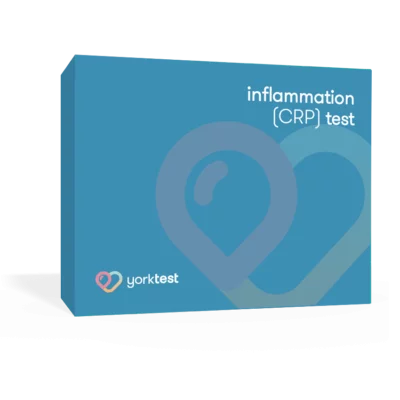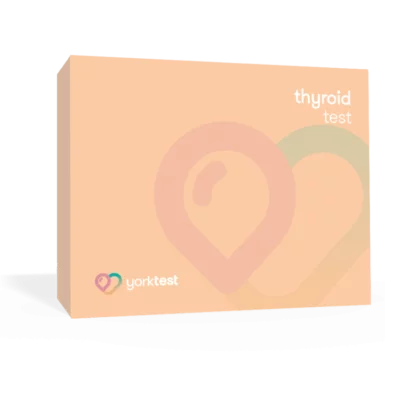
Mac & Cheese the Healthy Way - Tips, Substitutes, Nutrition and Tasty Additions
- Is Mac and Cheese Healthy?
- Making Healthier Ingredient Swaps
- Choose a Healthier Milk Base
- Smarter Cheese Choices
- Switch Your Pasta
- Lighten the Sauce
- How to Create a Low-Calorie, High-Protein Mac and Cheese
- Boosting Protein
- Reducing Calories
- Healthy Additions
- Nutrition Tips
- Food Intolerances
- So, Is Macaroni and Cheese Healthy?
When it comes to quintessential comfort pasta dishes, it’s pretty difficult to see past Macaroni and cheese. It’s one of the ultimate comfort foods – warm, creamy, and irresistibly indulgent. But while it’s a favourite for cosy nights in, many of us have asked ourselves at one point or another: is mac and cheese healthy?
While we hate to be the bearer of bad news, it must be said that traditional mac and cheese isn’t the healthiest option. A standard serving can be high in calories, saturated fats, and refined carbohydrates. However, with a few simple tweaks, it’s entirely possible to enjoy a lighter, more nutritious version of this family favourite, one that’s just as tasty and better for your wellbeing.
In this article, we’ll look at how to make a healthy mac and cheese, explore its nutritional profile, and share the best substitutes, add-ins, and toppings to transform this classic dish without sacrificing that all-important flavour.
Is Mac and Cheese Healthy?
Unfortunately, mac and cheese is not typically considered a healthy dish. Whether it’s made from scratch or poured straight from a box, mac and cheese tends to be high in calories, carbohydrates, and fat, particularly when made with full-fat milk, butter, and plenty of cheese.
A typical serving of homemade mac and cheese (around one cup or 250 g) can contain roughly:
- Calories: 400–600 kcal
- Carbohydrates: 45–55 g
- Protein: 14–20 g
- Fat: 20–30 g
While it’s rich in calcium and provides some protein from the cheese and milk, traditional versions can be heavy on saturated fat and sodium. Regular overconsumption may contribute to weight gain, sluggishness, or even digestive discomfort, especially for those with dairy sensitivities or food intolerances.
However, that doesn’t mean mac and cheese has to be off the menu. With a few mindful swaps, you can create a dish that’s a little more balanced, nutrient-dense, and digestion-friendly.
Making Healthier Ingredient Swaps
A few simple substitutions can transform your mac and cheese into a lighter, lower-calorie dish that still feels indulgent, but is better for your overall health. The goal isn’t to remove what makes it comforting, but to make it a little kinder to your body, especially if you enjoy it often.
Choose a Healthier Milk Base
If you’re looking for a milk substitute for mac and cheese, there are several great options that reduce fat and calories without losing the creamy texture. Almond milk is one of the most popular swaps, offering a mild flavour and fewer calories (just make sure it’s unsweetened if you want the healthiest option). Oat milk provides a naturally smooth consistency and a subtle sweetness, while semi-skimmed or skimmed milk keeps things light without compromising the sauce. Almond and oat milk are also fantastic options for those who suffer from a dairy intolerance. For added creaminess, evaporated milk or Greek yoghurt can work wonders and even give your dish an extra protein boost.
Smarter Cheese Choices
Cheese is the heart of mac and cheese, both metaphorically and physically. But despite what some people think, it’s quite easy to make it healthier with small adjustments. Try using reduced-fat cheddar or combining a smaller amount of a strong, mature cheese (such as parmesan or extra mature cheddar) for maximum flavour with less quantity. You can also stir in cottage cheese or a spoonful of low-fat cream cheese to keep the sauce smooth and rich without excess calories.
Switch Your Pasta
The pasta you choose makes a big difference to the nutritional balance of your mac and cheese dish. Swapping traditional white macaroni for wholewheat, lentil, or chickpea pasta boosts fibre and protein while helping you stay fuller for longer. Brown rice pasta is another good option, particularly for those following a gluten-free diet. These alternatives also provide a slower energy release, helping to avoid post-meal slumps.
Lighten the Sauce
A heavy butter and flour roux can add unnecessary calories, but there are several ways to make a lighter sauce. Try using olive oil or a smaller amount of butter, and replace plain flour with oat flour or cornstarch if you need a gluten-free option. You can also blend cooked vegetables such as cauliflower, butternut squash, or carrots into the mix; this adds natural creaminess and an extra nutritional boost.
How to Create a Low-Calorie, High-Protein Mac and Cheese
Balancing mac and cheese around your nutrition goals is actually much easier than it sounds. Whether you’re looking to reduce calories, increase protein, or simply eat more mindfully, a few thoughtful swaps can make a big difference.
Boosting Protein
Protein supports muscle repair, stabilises energy levels, and keeps you satisfied for longer. To turn your mac and cheese into a high-protein meal, you can also:
- Mix Greek yoghurt or cottage cheese into the sauce for a creamy texture and extra protein.
- Add grilled chicken, tuna, or tofu before baking for a heartier dish.
Alternatively, using lentil or chickpea pasta naturally increases protein content, while a spoonful of unflavoured protein powder can also be incorporated without altering taste.
Reducing Calories
Creating a lighter mac and cheese doesn’t mean losing flavour. Use semi-skimmed or plant-based milk instead of cream, and reduce butter to half the usual amount. Baking your dish gives it a golden crust without needing to add more cheese. With these small changes, your mac and cheese can go from 500–600 calories per serving to around 250–350, all while tasting just as comforting.
Healthy Additions
Healthy eating doesn’t have to mean keeping things plain. Adding fresh ingredients can bring more flavour, texture, and nutrients to your mac and cheese.
Vegetables such as broccoli, peas, spinach, kale,, or courgettes add colour, fibre, and essential vitamins. Stirring them through your dish instantly makes it more balanced.
If you like some crunch, top your mac and cheese with wholegrain breadcrumbs, herbs, or a sprinkle of crushed nuts (assuming you don’t have a nut allergy or intolerance) and seeds for healthy fats. A small amount of Parmesan or nutritional yeast adds a savoury finish. To enhance flavour naturally, try garlic powder, smoked paprika, Dijon mustard, or a few drops of hot sauce. Fresh herbs like parsley or thyme work beautifully too.
Nutrition Tips
Keeping your mac and cheese nutritious comes down to balance and portion control. Use wholegrain or legume-based pasta for more fibre and protein, and swap full-fat dairy for low-fat or plant-based milk. Adding at least one or two vegetables keeps it filling while reducing overall calories.
Bake instead of fry, season with herbs rather than salt, and be mindful of portion sizes – even a smaller serving can be satisfying when prepared with flavour and variety. These changes help you enjoy comfort food that supports your health, rather than working against it.
Food Intolerances
Dairy intolerance is one of the most common sensitivities, and, unsurprisingly, mac and cheese can often be a trigger. This discomfort may stem from lactose intolerance or sensitivity to casein, a milk protein.
If you regularly experience bloating, cramps, or fatigue after eating cheese-based dishes, it might be worth exploring whether a food intolerance is playing a role in your discomfort.
YorkTest’s Food Intolerance Test analyses your body’s IgG antibody reactions to over 200 ingredients. It’s a simple at-home blood test, professionally analysed in our laboratory, with personalised nutritional aftercare to help you make informed changes to your diet. If you would like to know if you have a dairy intolerance or similar, please contact us or order your test to optimise your health today.Â
So, Is Macaroni and Cheese Healthy?
Is mac and cheese bad for you? Not necessarily – it depends on how you make it. By choosing lighter ingredients, protein-rich pasta, and adding vegetables, you can enjoy a healthier version that still delivers the comfort you love.
If certain foods leave you feeling sluggish, YorkTest can help you identify your triggers and enjoy your favourite meals – including mac and cheese – in a way that supports your wellbeing.









